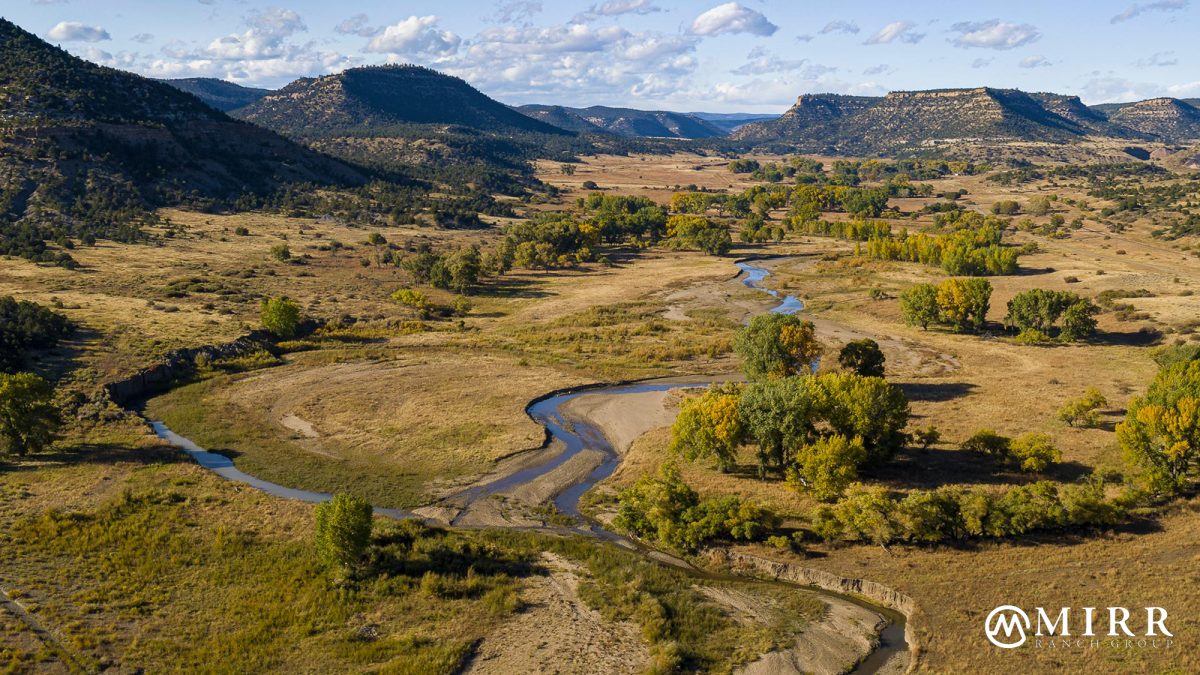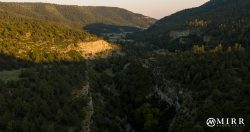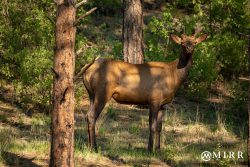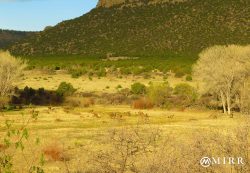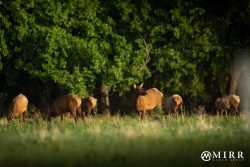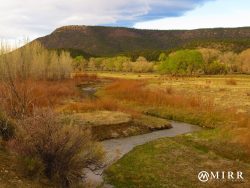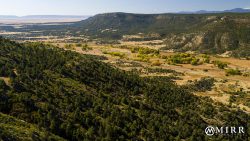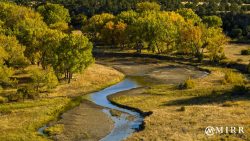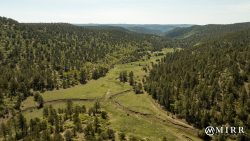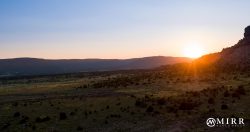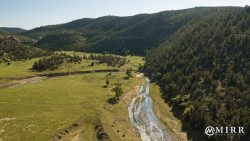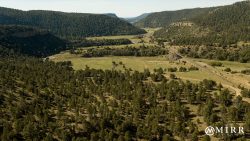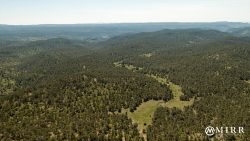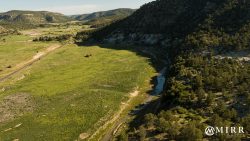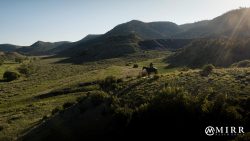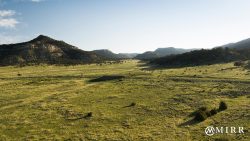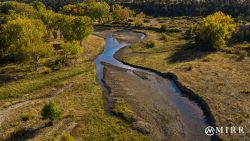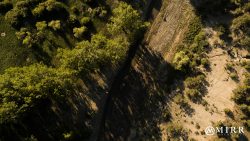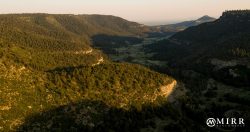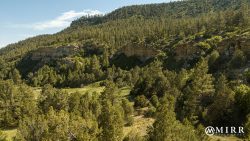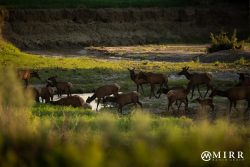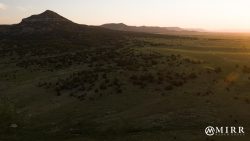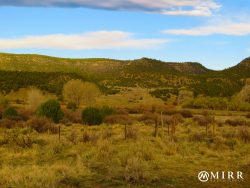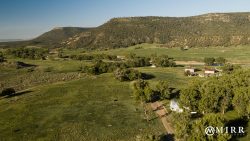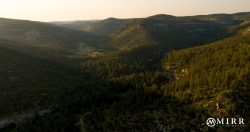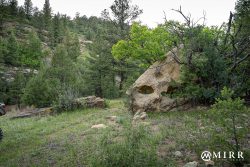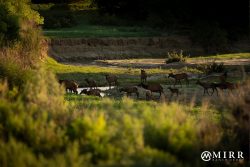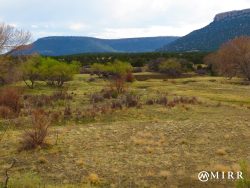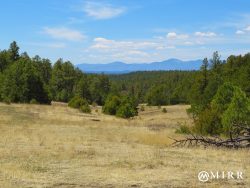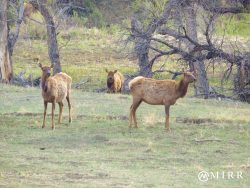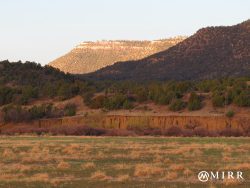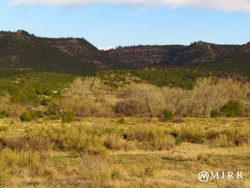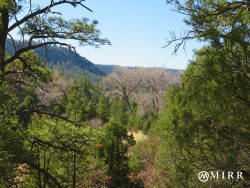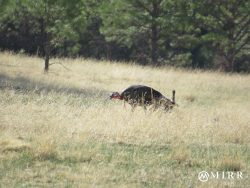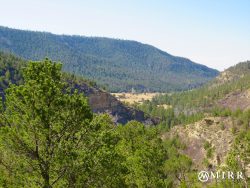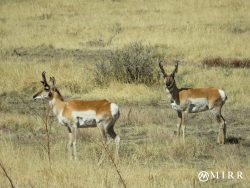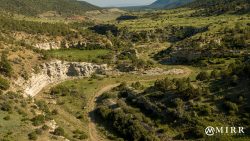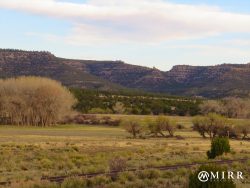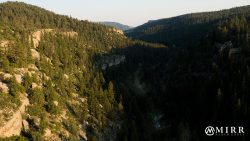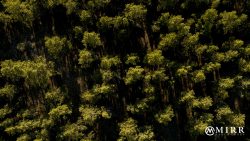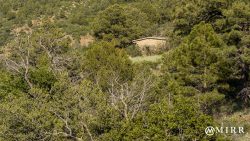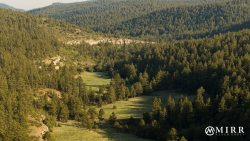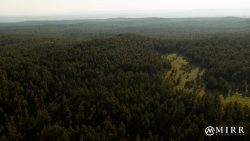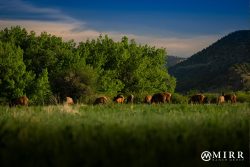Featuring
- 50,039 acres of beautifully diverse mountain terrain in northern New Mexico rising nearly 1,800’ in elevation from the plains
- Practically surrounded by Ted Turner’s Vermejo Park Ranch, biologists estimate there are over 10,000 elk that roam the more than 600,000 acres that comprise the Dawson Elk Valley Ranch and its neighbor
- 11 miles of Vermejo River bottomland meadows and riparian cottonwood-willow woodlands containing 17 river/streambank miles
- Thousands of acres of mountainous pinon-juniper, woodland, and ponderosa pine forest, and cottonwood lined riparian corridor along the Vermejo River
- Abundant wildlife including elk, deer, antelope, turkey, bear, and lion
- Within an hour of the communities of Raton, Angel Fire, and Red River; all with basic amenities and the latter two with operating ski areas
- Senior water rights
- Significant mineral resources
With over 11 miles of the Vermejo River and mineral rights, the Dawson Elk Valley Ranch is one and a half times larger than the state’s capital city of Santa Fe. This scenic and historic 50,039 acre Land of Enchantment treasure is located near Cimarron, New Mexico, within an hour’s drive of Raton and I-25 (east) and the ski areas of Angel Fire and Red River (west). The beautifully diverse landscape that ranges from approximately 6,160’ to nearly 8,000’ in elevation, boasts abundant wildlife from antelope at lower elevations to trophy elk and deer that seasonally range from the lower river valleys to the high elevation forests.
In addition, basic ranching developments are in place including river diversions and irrigation improvements. The combination of natural scenic beauty and basic improvements provide for not only a scenic second home estate but the re-establishment of a functioning cattle operation, as desired. Water rights come with the property, and 50% of the mineral interests, including executory rights, are included with this offering.
It’s difficult to comprehend the sheer size of Dawson Elk Valley Ranch. It’s bigger than most cities and larger than many national parks. This offering presents an opportunity to not only own astounding natural resources, immaculate wildlife habitat, and excellent water resources but purchasing this ranch would make you one of the largest landowners in the American West.
Several photographs of Dawson Elk Valley Ranch are taken by Camera Head Media.
Lay of the Land
Scenic natural diversity along with the scattered remnants of historic mining operations define the landscape of the Dawson Elk Valley Ranch. Dramatic, high elevation buttes, mesas, and ridges rise steeply from the lower elevation hills and valleys, forming a complex of winding canyons over the majority of the ranch. The Vermejo River runs the 11-mile North-South length of the property through expansive meadows and shady cottonwood-willow riparian areas. Beyond the Vermejo River floodplain, the ranch contains a rich mixture of shrub and forest vegetation with pinon-juniper woodland and ponderosa pine forest dominating, dissected by productive meadows in the many intervening drainages.
LOCALE
It is a short ride from the ranch to the community of Cimarron, and less than an hour’s travel east to Raton or west to the communities and ski areas of Eagle Nest and Red River. Taos and Taos Ski Valley are a scenic drive of under two hours.
CLIMATE
The climate is temperate; the warmest months being June through August where daytime temperatures average around 80 degrees and nighttime low’s average 50 degrees. The coldest months are December through February where average nighttime temperatures can dip into the upper teens, but with daytime temperatures reaching the upper 40’s. The average annual rainfall is just under 18” with the majority coming with the monsoonal moisture patterns of late summer. Winter snowfall averages 50” at the lowest portions of the ranch.
IMPROVEMENTS
Improvements include an occupied manager’s house and a separate complex of buildings that include a vacant home that houses the occasional hunter or visitor and several operating ranching support buildings. There are various water diversion and irrigation improvements in place and in use.
Sporting Features
HUNTING
All too often, we hear the term “world-class hunting”, but in the case of the Dawson Elk Valley Ranch the sheer size of the property along with the combination of genetics, habitat, and a well-managed hunting program truly has resulted in a world-class hunting property. A wide range of big game hunting opportunities exists on the ranch, including trophy elk and mule deer. It is not uncommon to see several hundred elk in a day’s time, with literally hundreds of cow elk calving in early summer along the willow and cottonwood-lined banks of the Vermejo River.
All wildlife, and elk in particular, will wander, but with prime summer and winter habitat available on the ranch, the wildlife that inhabits the ranch has no need to migrate to other areas to thrive. The ranch is also bordered on three sides by the 560,000-acre Vermejo Park Ranch, a nationally recognized trophy elk and deer hunting property. Elk in the 350” plus class and mule deer in the 175” plus class are common. The ranch also includes prime turkey, black bear, and mountain lion habitat, with antelope and a growing herd of whitetail deer roaming the lower portions of the ranch. The ranch is located in the New Mexico big game unit 55A, which is a “Special Management Zone” whereas State biologists and landowners negotiate license numbers allowing for readily available hunting licenses with generous season dates.
Ranch Attributes
RANCH OPERATIONS
The ranch includes an on-site manager’s home and a central headquarters area with mature trees and an older unoccupied home and various support buildings. The ranch also contains remnants of historic mining structures as well as dispersed improvements including windmills, dirt tanks, and a line cabin to support cattle operations. Water diversion and irrigation improvements are in place along the Vermejo River. Despite the ability to farm and harvest hay in the irrigated meadows along the river, current ownership/management has chosen to leave it for the wildlife. The ranch has not been grazed for the past three years and forage is presently in good condition. Together, the improvements in place could provide a basis for the development of a moderate cattle operation with lower open grazing lands of several thousand acres, over 11 miles of bottomland meadow along the Vermejo River, and countless more miles of upper drainage meadows.
WATER RIGHTS
Water is the lifeline of the West and this property is no exception. The ranch currently holds senior water rights to approximately 400-acre feet of water with a direct diversion point out of the Vermejo River that provides flood irrigation to several native grass-filled meadows below and provides valuable forage for the hundreds of elk and other wildlife that inhabit the ranch.
MINERAL RIGHTS
A unique feature of this property is that it retains ownership of all the mineral rights, and 50% of them will be conveyed (buyer will retain 100% executive rights) with the sale of the property. In addition to conveyance of mineral ownership of the coal deposits, these rights include all minerals, known and unknown.
With regard to the coal, despite the years of mining, an estimated 110 million tons of high BTU low sulphur coal reserves remain. While the long and storied history of coal mining along the eastern slope of the Rocky Mountains in southern Colorado and northern New Mexico has come to a close, there has been extensive development of these formations in recent years for coal bed methane (CBM) gas. Numerous companies have developed operations of various sizes, and the supporting infrastructure has been established to process and transport CBM gas to markets in the West and Midwest.
The 560,000-acre Vermejo Park Ranch, which abuts the Dawson Ranch on three sides, has been notable in this regard through El Paso Energy’s long-term CBM development there. As a result of the success there, limited testing was completed on the Dawson Elk Valley Ranch in 2001 to determine the economic viability of a CBM operation here. While the expected formations were in place in adequate thicknesses of both coal and gas-bearing sandstone, the gas content results and economic calculus were inconclusive due to the limitations of the study.
History has repeatedly shown that economic conditions, technology, and politics all play a role in determining the ebb and flow of mineral demand and value. What is certain from this study is that significant coal deposits and CBM gas underlie the Dawson Elk Valley Ranch. It represents an asset in hand, and as history has shown, current value does not indicate the future potential of this resource.
FOREST VALUES AND CONDITION
The majority of the ranch is covered by a combination of pinõn-juniper woodland and mixed conifer forest. The determining factor in how these two communities differentiate themselves spatially in the southern Rocky Mountains is primarily governed by a combination of elevation and aspect. Here on the Dawson Elk Valley Ranch, pinõn-juniper woodland is the first to rise above the low elevation prairie-shrubland. Within a short rise in elevation, groves of ponderosa pine appear among the more dominant pinon-juniper background, eventually giving way to a dominant mixed conifer forest. Traveling the roads on the ranch there is a pleasing interplay of these two types, transitioning from one to another and back again. While elevation does play a role, the greater influence here is aspect, with the north-facing slopes receiving less solar radiation and generally supporting conifer forest, while the dryer south-facing slopes are dominated by pinõn-juniper.
Both communities provide excellent habitat, and natural beauty, particularly in the mosaic pattern they form across the landscape here. The conifer forest, however, is of special interest in terms of its potential and its management implications. Left alone, it remains an asset of great value in terms of its scenic and habitat value. With proper management, it can also become a possible source of income and improved forest health. The conifer forest here ranges from pure ponderosa pine stands to a “mixed conifer” forest, which in this case includes a mix of ponderosa pine and Douglas fir. The stands exhibit excellent health overall and include a good range of age classes from mature-near mature to smaller trees of intermediate size and age classes down to pole and sapling size.
Tree stands are reasonably open in the understory and do not suffer from significant overstocking. The forest timber resource of the property is of significant volume and where slopes permit, could be marketed for small-scale logging if desired at some future time. Ideally, an ongoing program of thinning would help to keep the forest condition in a healthy state and provide a possible revenue stream. If such an income source is desired it should be noted that there is typically a good market for firewood in northern New Mexico, especially pinon pine. The extensive pinon-juniper stands could also be selectively targeted for small-scale harvesting without compromising the visual quality of the ranch if desired.
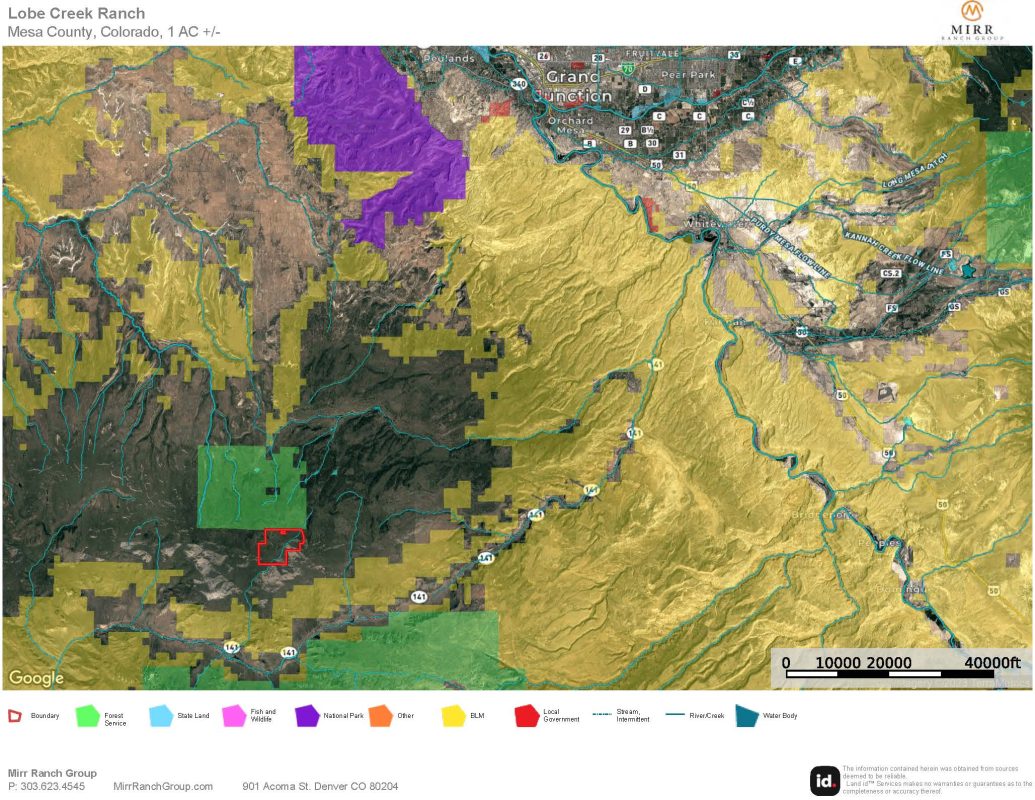 Location Map
Location Map 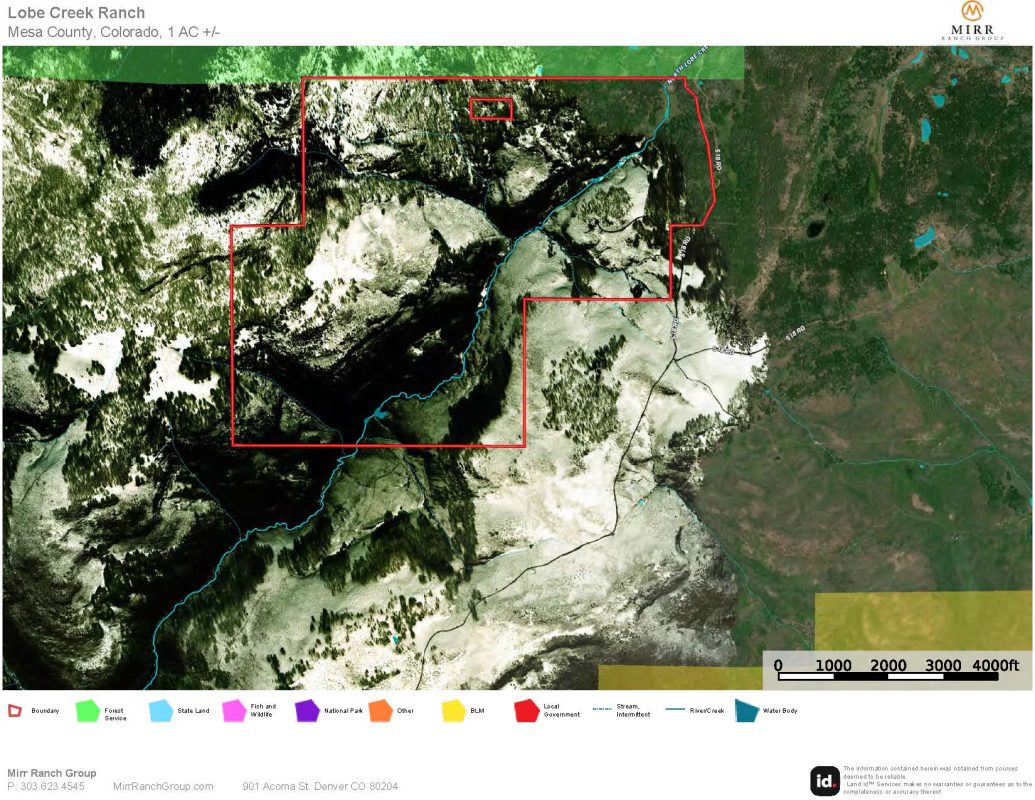 Aerial Map
Aerial Map  Topo Map
Topo Map 